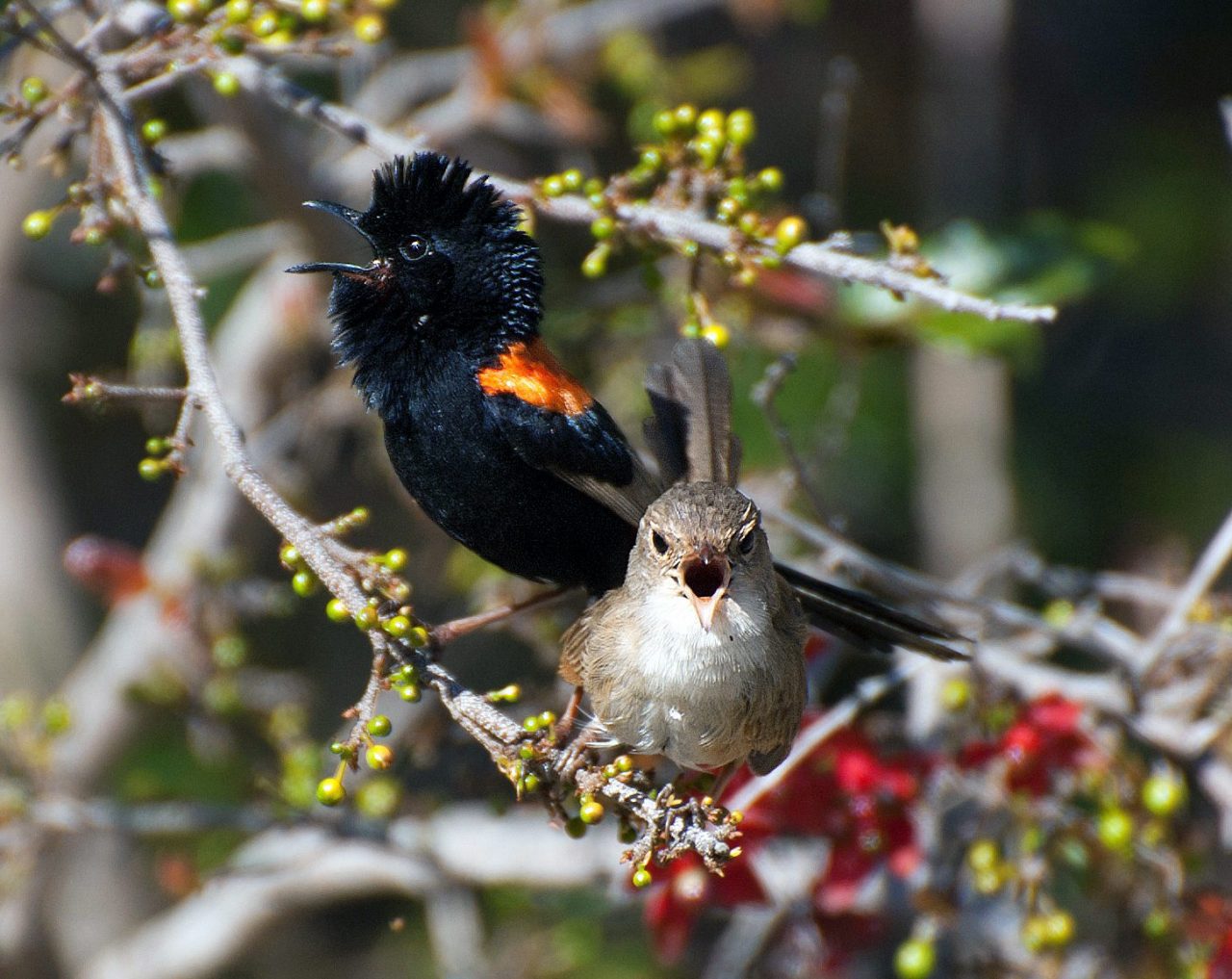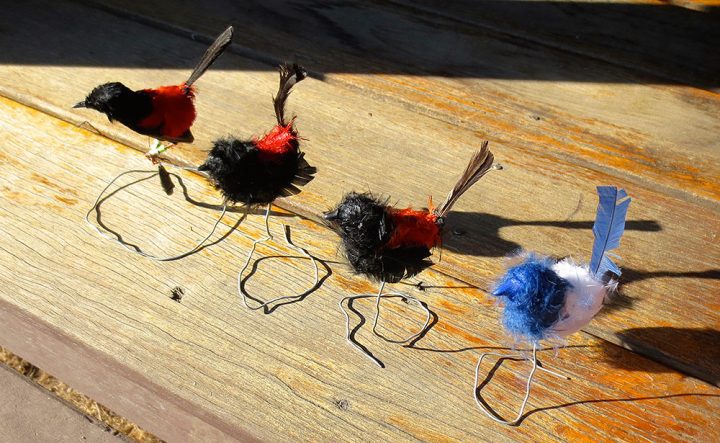Fairywrens Sing to Deter Cheating Mates
By Pat Leonard
February 25, 2016
The courtship and mating behaviors of the perky Australian Red-backed Fairywren have evolved into nothing short of a free-for-all. The rampant promiscuity of both sexes is legendary. What’s a fairywren to do to keep from wasting energy raising another male’s chicks? New research from scientists at the Cornell Lab of Ornithology provides a surprising answer: sing with your mate.
“The result was not expected at all,” says Daniel Baldassarre, an author of the study just published in Biology Letters. He was a Cornell graduate student at the time of the study and is now an NSF postdoctoral fellow at the University of Miami. “In fact, we were actually looking into whether more aggressive males did better at preventing extra-pair matings with their mate than more timid males. We thought the aggressive males would be cuckolded less often.”

To test the aggression hypothesis, the scientists positioned fake fairywrens in the bushes and played male song recordings. Some wrens were fierce in their territorial defense, physically attacking the fake birds to drive them off. Others were wary. But in the end, it made no difference. Whether lion or lamb, on average the males got cuckolded just as often.
The scientists tested their theory in the sub-tropical grassland and open woodland habitats favored by a population of color-banded Red-backed Fairywrens just outside Brisbane in Queensland, Australia. DNA paternity testing on the offspring from nests in this study site found an astonishing 60 percent contained young sired by a male that was not the one who shared their nest.
But in addition to measuring levels of aggression, the scientists also measured how quickly the pair began a duet and how often they dueted after detecting an intruder. Those who reacted quickly and dueted more are said to have a “strong” duetting response. Others were slower on the uptake.
“We found that pairs with a strong duet response had lower rates of cuckoldry,” says study author and Cornell Lab scientist Emma Greig. “Pairs were less likely to mate outside of their pair bond when they sang together more.”
“The male and female will immediately fly together and perch on a branch right next to each other and start belting out these duets,” adds Baldassarre. “If the males are particularly riled up, they will do this ‘puff-back’ display, raising the orange or red feathers on their back to the intruder. While duetting, their heads are thrown back to the sky with their beaks wide open.”
Even when pairs have a strong duet response, sometimes the mates still stray, but it does increase the likelihood that they’re raising mostly their own genetic offspring.
What exactly is going on during this duet and who is taking the lead? That’s the next big question in order to figure out what function the duets serve.
“For example, if the female is starting the song and the male jumps in, that might mean the function of the duet is for the male to mask or ‘jam’ the female’s signal so that she can’t broadcast to neighboring males,” says Baldassarre. “If the male starts the song and the female joins in, it may serve as a means of strengthening the pair bond. But we just don’t know for sure.”
“The big picture question is about how animals make mating decisions,” Greig explains. “Our results suggest the females are deciding what males to cuckold. Females are either being influenced by their mate’s songs, or females are indicating their own choice by singing with their mates more. We need more detailed work to distinguish these alternatives.”
Reference:
Daniel T. Baldassarre, Emma I. Greig, and Michael S. Webster. The couple that sings together stays together: duetting, aggression, and extra-pair paternity in a promiscuous bird species. Biology Letters. February 2016.

All About Birds
is a free resource
Available for everyone,
funded by donors like you
American Kestrel by Blair Dudeck / Macaulay Library
